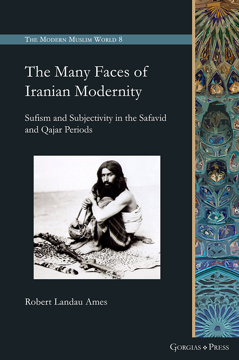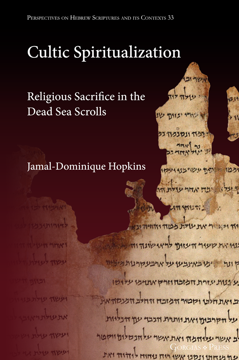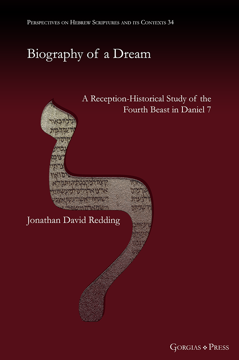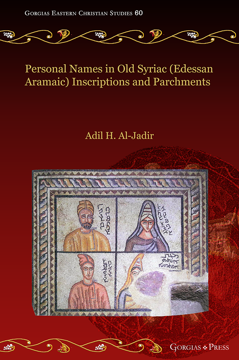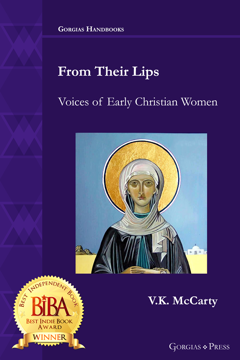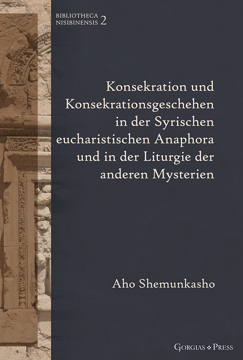The Many Faces of Iranian Modernity
Sufism and Subjectivity in the Safavid and Qajar Periods
By Robert Ames
Series: The Modern Muslim World 8
ISBN: 978-1-4632-4237-4
This study into both reformism and mysticism demonstrates both that mystical rhetoric appeared regularly in supposedly anti-mystical modernist writing and that nineteenth- and twentieth-century Sufis actually addressed questions of intellectual and political reform in their writing, despite the common assertion that they were irrationally traditional and politically quietist.
$106.00 (USD)
Cultic Spiritualization
Religious Sacrifice in the Dead Sea Scrolls
ISBN: 978-1-4632-4241-1
Throughout the history of research on the Dead Sea Scrolls, the investigation of religious sacrifice has been neglected. This book examines the views of sacrifice in the non-biblical sectarian Dead Sea Scrolls, through exploration of the historical and ideological development of the movement related to the scrolls (the DSS movement), particularly from the vantagepoint of the movement's later offshoot group known as the Qumran community
$110.95 (USD)
Biography of a Dream
A Reception-Historical Study of the Fourth Beast in Daniel 7
ISBN: 978-1-4632-4243-5
The biblical apocalyptic books of Daniel and Revelation are, for better or worse, polarizing. Interpreters have long read and searched these books for clues about how their worlds will “end,” which each new interpreter promising to have “unlocked” how Daniel and Revelation work together to uncover a divine plan for prophetic fulfillment. Redding uses the Vision of the Fourth Beast from Daniel 7 as a case study to consider how interpretations of texts take on lives of their own, eventually wedding interpretation with text and prompting the question: what even is a text? Is it what is on the page, something interpreters put there, or a combination of both? Starting with the literature of the Levant, this work traces the use of motifs, images, and themes through Daniel, Revelation, and into pre-Enlightenment Christian thinkers to consider hermeneutical trajectories that shaped (and continue to shape) how modern readers engage biblical apocalyptic literature.
$114.95 (USD)
Bar Sira According to the Syriac Peshitta Version with English Translation
Text Prepared by George Anton Kiraz & Joseph Bali; English Translation by David Skelton, Jacob A. Lollar & Blake Jurgens
Series: Surath Kthob 20
ISBN: 978-1-4632-4245-9
This volume is part of a series of English translations of the Syriac Peshitta along with the Syriac text carried out by an international team of scholars.
$150.00 (USD)
Gregory Barhebraeus' Mystical Hermeneutics of the Love of God in Dialogue with Islamic Tradition
Series: Islamic History and Thought 23
ISBN: 978-1-4632-4247-3
An inquiry into the mystical thought of Gregory Barhebraeus, offering a reading of Barhebraeus’ mystical texts by bringing them into conversation with critical religious studies and the hermeneutical tradition of philosophy.
$133.00 (USD)
Personal Names in Old Syriac (Edessan Aramaic) Inscriptions and Parchments
Series: Gorgias Eastern Christian Studies 60
ISBN: 978-1-4632-4249-7
This book collects systematically all the personal names found in Old Syriac sources in such a way as to enable them to be dealt with from a structural and lexical point of view and compared with other corpora of Aramaic personal names as well as Hebrew and Arabic names. As far as possible, the personal names of the new finds of unpublished inscriptions discovered recently are included. Thus, this study covers all the personal names which are found in the Syriac corpus so far. The book fills a significant gap in scholarship, since there are dedicated works on Palmyrene, Hatran and Nabataean personal names, but no such work exists for early Syriac (i.e. pre-Christian Syriac) personal names.
$114.95 (USD)
From Their Lips
Voices of Early Christian Women
By VK McCarty
Series: Gorgias Handbooks 53
ISBN: 978-1-4632-4255-8
The Church venerates among its saints several Early Christian women whose teaching and wisdom contribute to the depth of our theological heritage. Their inspired voices can be heard at work witnessing: in the New Testament, in the early centuries of the Church Fathers and throughout the Byzantine era. Readers will find this volume bringing female leaders from the Early Church to life from the traditional ancient sources and sharing their experience of the presence of God. Their remembered advice to followers still illuminates issues of faith and justice which bind us together as Christians today.
$48.00 (USD)
Athanasius' Use of the Gospel of John
A Rhetorical Analysis of Athanasius' Orations against the Arians
ISBN: 978-1-4632-4257-2
The Orations against the Arians are an important landmark in the development of Christological and Trinitarian doctrine. The Orations contain extensive references to the Christian Scriptures and are steeped in rhetoric. The use of Scripture and polemical rhetoric against Athanasius’ theological opponents, the Arians, is intricately interwoven. This monograph offers a rhetorical analysis of the Orations against the Arians to demonstrate the interplay of scriptural reasoning and polemic in Athanasius’ work. In this way, Boezelman’s study provides a fresh perspective on the reception of John’s Gospel in the fourth century.
$144.95 (USD)
“Who Knows What We’d Make of It, If We Ever Got Our Hands on It?” (paperback)
The Bible and Margaret Atwood
Edited by Rhiannon Graybill & Peter J. Sabo
Series: Biblical Intersections 18
ISBN: 978-1-4632-4258-9
In the nightstands of hotel rooms, kept under lock and key, in the poetry of a pre-apocalyptic environmental cult, and quoted by children, atheists, and murderers alike—the Bible is omnipresent in the work of Margaret Atwood. The Bible is found not only in her novels but also in her poetry, short stories, and non-fiction work. “Who Knows What We’d Make of It, If We Ever Got Our Hands on It?” assembles cutting edge literary and critical readings of Margaret Atwood and the Bible.
$65.00 (USD)
Konsekration und Konsekrationsgeschehen in der Syrischen eucharistischen Anaphora und in der Liturgi
Series: Bibliotheca Nisibinensis 2
ISBN: 978-1-4632-4259-6
Am Beispiel der Initiationssakramente (Taufe, Firmung, Eucharistiefeier) und der Priesterweihe wird einerseits die Konsekration der Materie (Wasser, Myronöl, Brot und Wein) und des Empfängers dargestellt, anderseits das Konsekrationsgeschehen der einzelnen liturgischen Vollzüge nach der syrisch antiochenischen Liturgie miteinander verglichen, analysiert und kommentiert.
$123.00 (USD)
